Cannabinoids is a highly lucrative industry that a lot of companies and individuals are interested in participating in. But while CBD is popular, promoting it is not as easy.
If you're curious and are thinking of selling CBD products either as a side-hustle or a full business, then this article is for you!
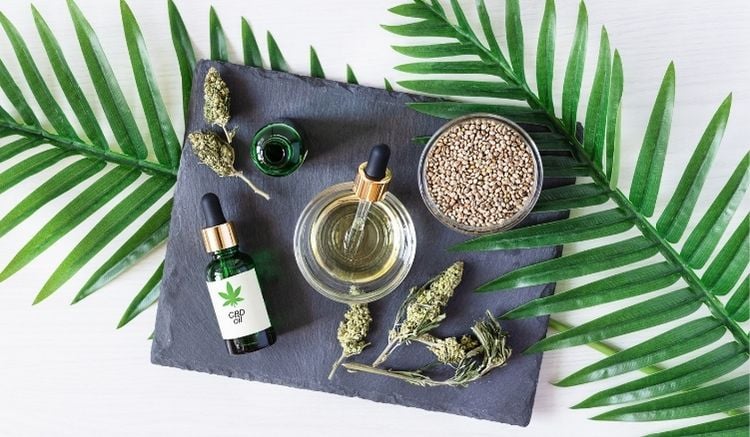
Table of Contents
What is CBD?
Types of CBD-Derived Products
Limitations of CBD Online Promotion
7 Ways to Advertise CBD Online
Do’s and Don’ts of Advertising CBD Online
CBD marketing is one niche with many restrictions because of its former “illegal” status. Even after passing the Farm Bill in the USA that made hemp production legal, CBD and other CBD products still suffer from certain advertising restrictions like not being able to advertise on Google and Facebook.
For this reason, you’d need to take your mind off paid social media advertising if you’re looking to enter the CBD market. While these restrictions certainly look like doom for the market, several successful CBD brands prove there are other ways to market your CBD products without social media.
Hence, this article will examine how you can advertise CBD and sell its products online to countries that allow CBD without suffering from discriminatory ad policies or restrictions.
Are you ready? Let’s begin!
What is CBD?
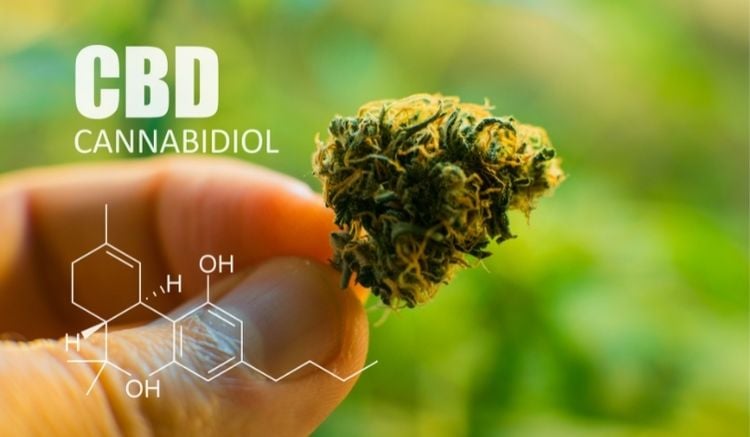
When you think of the cannabis industry, the first thing that comes to mind is either hard drugs or drug abuse. But that’s not the case with CBD. Though Cannabidiol exists in cannabis plants, it’s simply a natural and harmless compound with many benefits.
CBD is different from the THC compound you can also find in marijuana. It’s not psychoactive and cannot make anyone “high” like marijuana. With CBD, brands can create oil, supplements, gummies, gels, vape cartridges, lip balms, extracts, and many other products.
It’s legal for people to use CBD as a treatment for two severe cases of epilepsy which shows the medicinal potential of the natural compound. Some oral solutions containing CBD effectively treat children with the rare condition TSC (tuberous sclerosis complex) that causes seizures.
Furthermore, the information on the health benefits of CBD is quite favourable as the compound now exists in various consumer goods like CBD oil, sparkling water, and facial scrubs.
Why is CBD Popular?
Cannabidiol owes its popularity to the bill that made it legal for mainstream markets. But that’s not the only reason its products are popular. Here are some other reasons:
CBD Has Great Medicinal Potential
CBD benefits many people as a treatment option making it one of the reasons why it’s popular. Most CBD products have one or two health benefits attached, and some can even help with hair growth.
CBD is a booming health and wellness product on the market today. And for good reason!
Beyond that, some studies suggest that CBD can serve as an effective treatment for people with mental health issues like schizophrenia.
No Psychoactive Effects
CBD’s psychoactive effects are so negligible that it's impossible to get “high”. Thus, people can use it to reduce stress or pain.
As such, it helps in reducing anxiety and inflammation, helps improve sleep quality, and helps your body fight against chronic diseases.
Because of the high customer interest, it makes a booming market for investors, researchers, and farmers.
Types of CBD-Derived Products
There are many concerns surrounding CBD products because of how close it is to marijuana. In truth, most of these concerns created legal problems for various CBD companies in different states.
It’s legal to sell CBD in certain locations today as long as your products remain within the minimum 0.3% or 0.2% THC limit (depends on the country or state). This is so your products don’t become dangerous to the public. Make sure you check the list of locations where it's legal to sell CBD if you plan on promoting it in the United States.
Hence, you can start a CBD business without issues if you stick to the rules like not making false claims on your product page as well as getting licensed.
It’s also essential for CBD marketers to know the different types of CBD products, how different customers use them, and the customers each product appeals to. After all, you can shoot blanks when trying to market something as important as this!
Here’s a list of CBD products available today:
-
CBD Edibles
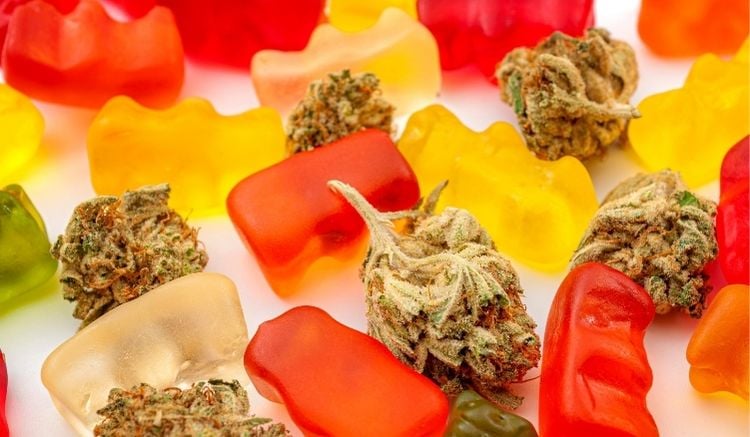
CBD edibles are food products containing small amounts of CBD, including chews like gummies, chocolate, beverages, hard candies, and even cookies.
CBD edibles appeal to customers that prefer taking CBD in the form of a delicious treat.
However, cannabidiol edibles receive additional regulations that differ according to each state, including packaging and food safety regulations.
-
CBD Capsules
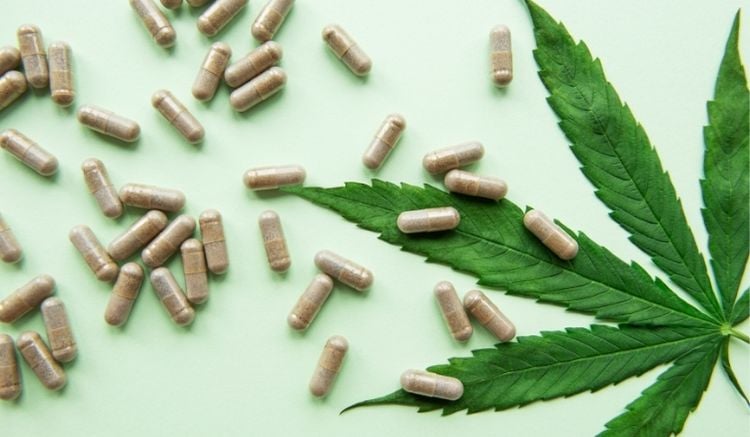
Like every other soft gel or gelatin capsule, a CBD capsule is convenient to consume and is a fast way to take a dose of CBD. These CBD products attract customers that don’t want edibles but want to take CBD through ingestion.
Plus, you can use CBD capsules to attract customers new to CBD. Why? Because most people are familiar with taking medications or multivitamins in capsule form, it won’t be different for CBD capsules.
-
CBD Oils and Tinctures
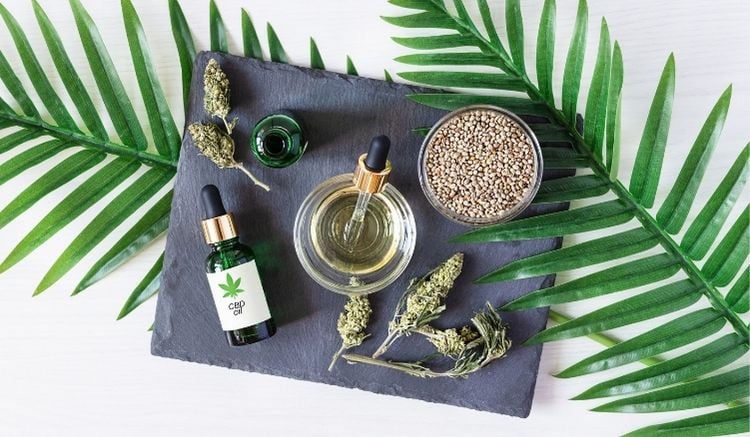
Tinctures are concentrated extracts that you can make by soaking herbs in potent alcohol for a long time. For CBD tinctures, you can make them by mixing natural CBD oil with any solvent like alcohol.
People can take Tinctures by putting a few drops under their tongues. CBD tinctures are so concentrated that you only need a small amount to feel their effects. CBD tinctures appeal to people that want the fastest way to take and feel the effects of CBD.
-
CBD Patches
Ingestion is not the only way to take CBD—some people prefer absorption. Like other pain relief or nicotine patches, CBD patches allow people to release CBD ingredients into their bodies through their skin gradually.
CBD patches work well for people who want a consistent but low dosage over a day. These patches are also convenient and helpful for people that don’t have access to or the chance to take CBD products during the day.
-
CBD Vaporizers and Vape Concentrates
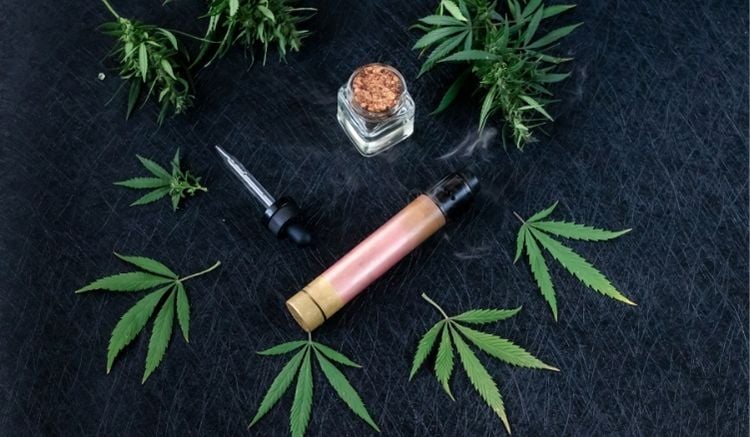
People can also consume CBD through inhalation. CBD vaporizers send their ingredients straight into the bloodstream and provide immediate effects like tinctures.
People can also vape CBD concentrates the same way they vape nicotine e-liquids. As such, you can find CBD vapes in most vape stores.
This is one of the most popular CBD products today since a lot of people are switching to vaping.
-
CBD Isolates
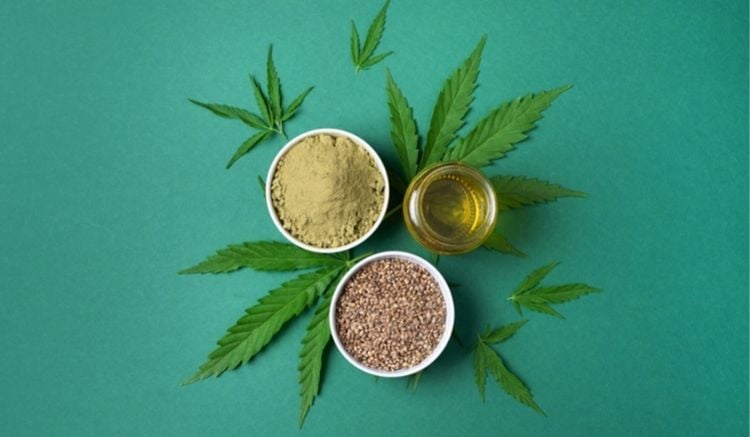
Isolates are pure substances that you can extract from a source and refine into powder. CBD isolates eliminate other natural plant substances like wax and chlorophyll and produce pure CBD.
These CBD isolates don’t have flavor and color and work just like tinctures or as ingredients that add CBD to different foods and drinks. CBD isolates appeal to customers that love mixing their own CBD products at home.
-
CBD for Pets
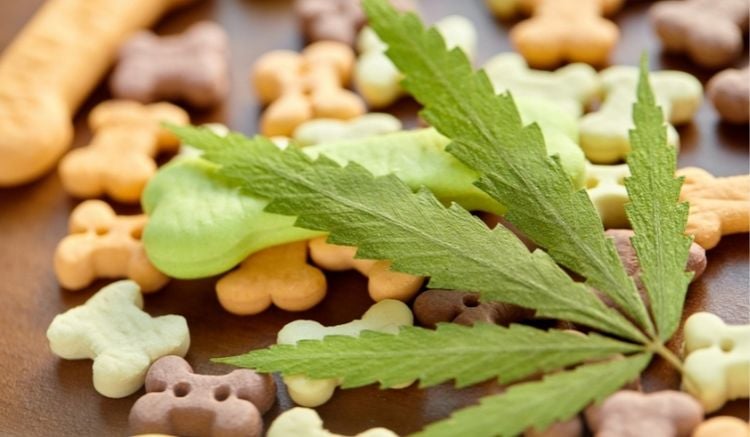
CBD also has similar effects on animals, so people with pets can use CBD to help the animals relieve pain or anxiety–even if they don’t use any CBD themselves.
However, animals have more sensitive systems, so CBD for pets has special formulas that ensure the pet’s safety. These products can even come in different flavors like fish and beef to make them tastier for cats and dogs.
-
CBD Topical Formulation
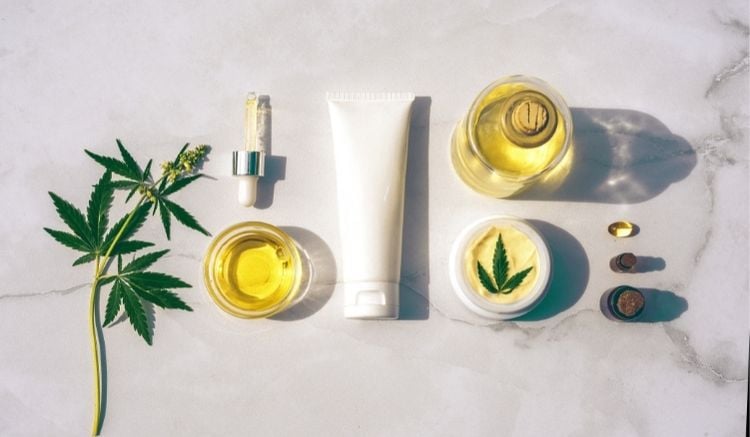
CBD topical formulations are preparations for rubbing on the skin, including lotion, gel, salve, and cream. People can also apply these products to painful or inflamed areas directly for pain relief. CBD oil is also a topical type of formulation.
CBD topicals serve as alternatives for customers that don’t take CBD orally. Cannabidiol also works as massage ointments and can have some ingredients like menthol to give a cooling sensation.
Limitations of CBD Online Promotion
As we mentioned earlier, many restrictions limit the advertising freedom of the CBD market, despite the favorable legal climate today.
Let’s take a look at these various challenges that plague every CBD marketer:
Social Media Limitations
Many social media platforms, including Facebook, Instagram, Snapchat, Twitter, and TikTok, do not allow paid ads from CBD brands. These platforms will reject any ads that contain references to cannabis, CBD, hemp, or marijuana. However, you can use organic content and posts to advertise CBD on Facebook and other social media platforms.
After Facebook lifted its first blanket ban on Cannabidiol, the platform allowed brands to post ads for CBD Topicals. However, the ban still has a grip on any ingestible Cannabidiol product.
Facebook will even investigate domains and block ads that direct users to a landing page that advertises CBD online.
Google Limitations
Unfortunately, marketers can’t advertise CBD on Google.
Google does not approve any ads that promote the sale and use of hemp products or Cannabidiol. Unless you advertise organic Cannabidiol content, bypassing this limitation will be impossible.
If you insist on using Google for advertising, make sure that you do not mention the CBD aspect of your product on the ad itself and that your landing page does not contain the word CBD or Cannabidiol in any way.
Stringent Laws
Though the 2018 farm bill has dramatically helped the development of the CBD industry, it’s still not completely legal. Some states still ban the sale and use of CBD, while others that allow it place specific rules on how marketers should advertise CBD products.
Whatever strategy you have to advertise CBD must comply with all rules and regulations laid out by the FDA.
These rules include:
- All marketers promoting the sales of Cannabidiol must follow the guidelines created by the Federal Food, Drug, and Cosmetic Act (FD&C Act)
- Unless supported by relevant and reliable medical advice or research, marketers cannot promote CBD products as dietary supplements or medical claims for any illness. It would be deceptive marketing.
- Always back up the statements about your CBD product and business with proof. However, your evidence should not be unfounded or exaggerated claims.
Payment Limitations
With so many questions surrounding cannabinoids, most people view Cannabidiol as a high-risk product. For this reason, it might be hard to find a payment processor that’s willing to work with a CBD brand.
A Highly Competitive Market
As CBD advertising evolved from a shady business to a legal consumer market, there has been an increase in demand for CBD, which led to tight competition between CBD marketers.
Such situations can pose a challenge for new brands as they’d need to develop a strong marketing strategy that can push them ahead of their competition. Otherwise, they’d fall behind and fail to make any sales.
Consumer Concerns
There are many questions and uncertainty surrounding the CBD market, and because of this, potential customers might become afraid. Some prospects may think that consuming CBD oil or other consumable Cannabidiol products may make them addicted to cannabis. And this is one major factor that complicates CBD marketing.
Once customers are skeptical about a particular business, it could place you in a challenging position as you’ll constantly try to convince them about the benefits of your products.
7 Ways To Advertise CBD Online
While two of the biggest advertising networks online—Facebook and Google—do not allow the advertising of CBD products, you need not lose hope.
Despite the several limitations of CBD marketing, there are various ways to reach your CBD online audience.
However, you’ll still need to comply with the laws to avoid problems later. One wrong move, and your ads can get rejected, and you can get banned. So always be careful and keep yourself updated with the latest requirements regarding CBD production.
Without further ado, here are seven ways to advertise your CBD online business:
1. Display Advertising
To effectively promote your CBD products, you need to take advantage of display advertising. Display advertising allows you to target a large audience with your marketing messages, in the form of banner ads, rich media ads, or video ads.
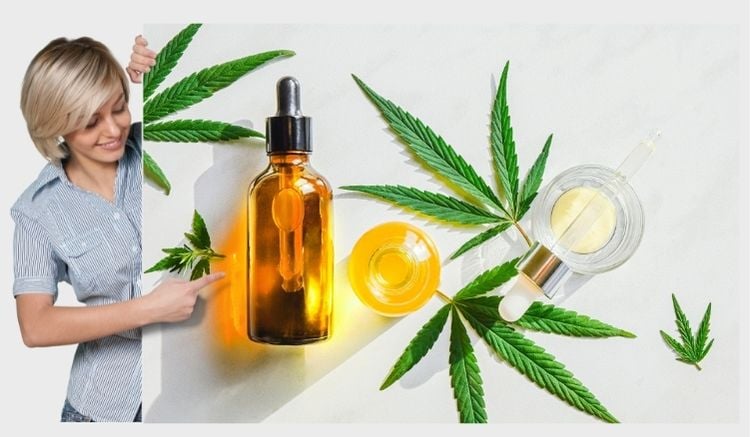
It also enables you to tailor your ads to the specific needs and interests of your target audience. Some useful strategies for using display advertising to promote CBD products include running remarketing campaigns, creating custom audience segments, and optimizing for conversions.
With remarketing campaigns, you can showcase your CBD offerings to people who have already visited your website or shown interest in similar products on other online platforms.
This allows you to stay top-of-mind with these potential customers and build trust by providing them with relevant information about your products over time.
Additionally, custom audience segments can help you better understand what types of CBD offerings will most appeal to particular groups of customers, which can give you valuable insight into how to effectively position and market your products.
Finally, optimizing for conversions means tracking key performance indicators closely and making adjustments as needed in order to maximize the success of your marketing efforts. With these strategies in place, you can fully tap into the power of display advertising to promote your CBD products and drive sales growth for your business.
There are many CBD-friendly ad networks that you can use for your display advertising campaigns, such as Mantis, Propeller Ads, and AdCash.
2. Social Media Marketing
When we talk about social media marketing, it’s not always about paid ads. For products like CBD, you can always go for organic (natural) promotions. Let’s discuss how you can do these using specific social media platforms.

Using Facebook Groups
Although you can’t use paid advertising for CBD on Facebook, there’s no rule against “promoting” for free. And all you’ll need is an engaged following and an active posting schedule.
First, you’ll need to create a Facebook group. Most marketers tend to underestimate the power of Facebook groups—it requires the least investment money-wise but would need a lot of time.
But if you’re going to spend time and money on paid CBD advertising, why not spend time building a successful group and then reinvest your money into your business or hire a social media manager?
For engagement and lead generation, some marketers use Facebook groups to get referral traffic for their content-based pages. To avoid getting banned by Facebook powers-that-be, don’t direct users to a product page. Instead, lead them to an article that serves as the top of your marketing funnel.
Or, instead of selling products at the onset, you can send your Facebook traffic to an opt-in page so you can add these leads to your email marketing campaigns.
In truth, properly promoting your Facebook group can get you direct leads and sales. But you’ll need a solid engagement rate where your targets can discuss, respond, share, and start making purchases from you. And you’re not spending a dime, only time.
Using TikTok
The best thing about Tiktok is that it’s still new in the marketing landscape. You can be one of the first to make a name for your brand on this platform.
Keep in mind, though, that TikTok only allows topical CBD. Ingested CBD posts get an auto-block and maybe even an account ban. Videos showing buds, plants, or paraphernalia will be quickly taken down in a snap. But if you do it right, you can get an increase in sales, just like Cannabombz.
So how do you start? By creating short, entertaining videos that are less than a minute long. These videos must be creative and offer some value to users.
If you’re not sure what kind of videos to create, start by checking out what other CBD companies are doing on Tiktok. Take note of the popular trends and challenges, and see how you can put your own spin on them. Also, don’t forget to use relevant hashtags so your target audience can easily find your videos.
CBD Marketing using Snapchat
While Snapchat may not have as many users as Instagram or Facebook, it still has its fair share of active daily users. And since the platform is geared towards a younger demographic, it’s a great place to market CBD products.
To get started, create short videos or images (snaps) that show off your products. You can also use snaps to give your followers a behind-the-scenes look at your business or take them on a virtual tour of your store or office.
Another great way to use Snapchat for marketing is to run contests and giveaways. For example, you could ask your followers to snap a photo of themselves using your product and share it with you for a chance to win a prize. Just be sure to follow all of Snapchat’s guidelines for running contests and giveaways.
3. Email Marketing
Email marketing is another great way to promote your CBD business and products.
You would need an email list for this, though, which you can achieve by sending traffic to a lead capture page (like what we discussed above under Facebook groups) or a newsletter opt-in page on your website and blog.

But before you start sending out a bunch of emails to your email list, there are a few things you need to know.
First, make sure you have a well-designed email newsletter template. This will give your emails a professional look and help you stand out from the competition.
Second, be sure to segment your email list so you can send targeted messages to different groups of people. For example, you might want to create separate lists for customers and prospects or for people who have bought from you in the past and those who haven’t.
Third, don’t forget to include a call-to-action (CTA) in every email. A CTA is simply an action that you want your recipients to take, such as “Buy Now,” “Sign Up,” or “Learn More.”
One thing you shouldn’t do with email marketing CBD products is that you should avoid purchasing an email list.
Buying a ‘target list’ will only destroy your brand before you have a chance to surface, especially with a tight community like CBD. Building and cultivating your email list is a better strategy.
It would help improve your brand equity and make sure you’re only reaching out to promising targets that trust you and not randomly shooting to get leads. Remember that it’s hard to earn trust but easy to lose it–so no slacking!
4. Influencer Marketing
Influencer marketing is one of the most effective strategies for CBD online marketing. It's like riding a bus when you don't have a car—influencers give you access to highly targeted and active audiences when you're trying to build or don't have an audience base.
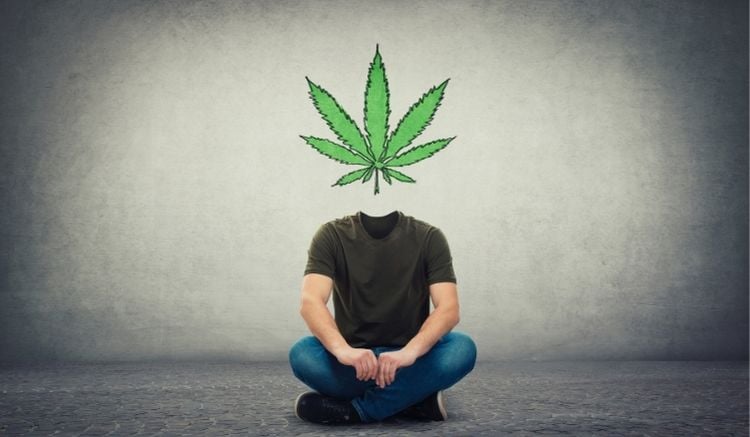
Partnering with influencers mostly gives you better ROI when compared to digital ads. Digital ads tend to interrupt the social media experience, which leads to people ignoring your ad or message.
But with influencer marketing, your message won't interrupt the social media experience but will blend with it seamlessly, allowing people to notice your promotions on recent posts.
Social media influencer marketing for CBD advertising is also cost-effective. To get the most out of your budget, you can grow your business and use different payment styles, including paying per post, tracking conversions with an affiliate link, and paying per conversion.
Here are some other benefits of using influencer marketing for your CBD business:
-
Larger Audience
When done right, influencer marketing can help you reach a larger audience, build brand awareness, and boost sales.
When it comes to information about brands, most people tend to trust other people's opinions, even if they don't know them. And since people are more likely to buy products that have been recommended by someone they know and trust, it’s a great way to get your foot in the door with potential customers.
Your CBD marks will only hit the right and dedicated customers interested in wellness and health products (if you choose the right influencer).
-
Improve traffic to your Social Media Pages
An influencer's relationship with their audience would drive a steady flow of followers to your CBD brand's social networks.
-
Engaging organic content
CBD social media influencers create user-generated content that you can use as a way to promote the sales of your CBD products on social networks.
To find influencers to work with, start by searching for industry-related hashtags on social media.
For example, if you’re selling CBD oil, you could search for hashtags like #CBDoil or #CBDhealth. Once you’ve found a few influencers that you’d like to work with, reach out and introduce yourself.
Don't worry if you can’t find or connect with influencers for your brand. There are platforms like Upfluence and Influence.co that can help find the best influencers via their reach, audience base, and level of engagement on their recent posts.
5. Native Advertising
Native advertising is a form of online advertising that blends in with the surrounding content. It’s often used on social media and news websites and can be an effective way to promote your CBD products.
The key to making native advertising work is to create ads that are relevant to the website or publication where they will be appearing. For example, if you’re placing an ad on a health and wellness website, your ad should be about CBD products and their health benefits.
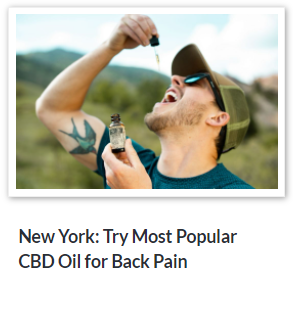
Right now, this is one of the most effective modes of advertising CBD as it takes the place of paid social media advertising. The audiences are engaged and the traffic comes in millions of views every day!
In fact, we have a case study on how Tommy Chong’s CBD was able to reach its customers and improve sales within a few months.
And with the help of Brax, a native advertising management platform, Tommy Chong’s CBD was able to reach 533% increase in profitability! If you’re in the CBD industry, it would be worth it to book a free demo today to see how Brax can help your business.
If you need assistance with using native ads to promote your CBD products, have a look at this CBD advertising guide we created.
Some examples of networks that allow the promotion of CBD products are Taboola, Outbrain, MGID, and RevContent. Just make sure you read through the requirements and restrictions of each ad network to ensure ad approval.
6. Content Marketing
Content marketing is a great way to attract new customers and keep existing ones coming back for more. When done right, it can help you build trust and credibility with your audience, which is essential for any business, but especially for one selling CBD products.
The first step in creating a content marketing strategy is to identify your target audience. Once you know who you’re trying to reach, you can create content that appeals to them and addresses their specific needs.

Next, you need to decide what kind of content you want to create. Some ideas include blog posts, articles, infographics, videos, and e-books. Once you have a few ideas, start creating high-quality content that your target audience will find useful and shareworthy.
Finally, don’t forget to promote your content. You can do this by sharing it on social media, sending it out in your email newsletter, or even running ads on popular websites and blogs.
7. Podcast Sponsorship
Podcasts are becoming more and more popular, which makes them a great way to reach new audiences. And because people tend to listen to podcasts while doing other things, like commuting or working out, they’re often more engaged with the content than they would be with other forms of media.
One great thing about podcast sponsorships is that there's a guaranteed existing audience, so you'll be reaching out to people who trust the opinions of the podcast, similar to influencer marketing.
To find podcasts that would be a good fit for your CBD business, start by searching for industry-related keywords on iTunes or Google. Once you’ve found a few that look promising, reach out to the hosts and inquire about sponsorship opportunities.
Advertising CBD Online: The Dos and Don’ts
Now that we know what CBD is, why it’s popular, and the different ways to promote it, let’s take a look at some of the dos and don’ts of advertising CBD online.
Do Research on the Laws in Your Country

Before you start promoting CBD products, it’s important that you check your country’s laws and regulations surrounding CBD. For example, in the United Kingdom, it’s currently illegal to sell CBD products as food supplements. So if you’re based in the UK, you’ll need to find other ways to market your products.
In the United States, meanwhile, the laws surrounding CBD are a bit more complex. The 2018 Farm Bill made it legal to sell CBD products that contain less than 0.3% THC. But because cannabis is still illegal at the federal level, some states have stricter laws than others. For example, in Texas, only CBD products that contain no THC are legal.
So it’s important that you research the laws in your country before you start advertising CBD online. Otherwise, you could risk getting into trouble with the law.
Do Use Targeted Keywords

When you’re creating content to promote your CBD products, it’s important that you use targeted keywords. That way, people who are searching for information on CBD will be more likely to find your content.
Some good keywords to target include “CBD oil”, “CBD gummies”, and “CBD for anxiety”.
Don’t Make Medical Claims

CBD is still a relatively new compound, which means that there hasn’t been a lot of research on its potential health benefits. As a result, you shouldn’t make any medical claims about CBD in your marketing material.
For example, don’t say that CBD can “cure” cancer or that it’s “the new miracle drug”. Not only is this type of language misleading, but it could also get you into trouble with the law. In the United States, for example, it’s illegal to make false medical claims about a product.
Do Create High-Quality Content
When you’re creating content to promote your CBD products, it’s important that you focus on quality over quantity. That means writing well-researched articles that provide value to your readers.
If you can do this, you’ll be more likely to build up a loyal following of readers who are interested in what you have to say. And this, in turn, will help you sell more CBD products.
Do Promote the Benefits of CBD
One of the best ways to promote your CBD products is to focus on the benefits that CBD can offer. For example, you could write articles about how CBD can help to relieve anxiety or pain.
By promoting the benefits of CBD, you’ll be more likely to convince people to give your products a try.
Don’t Promote CBD as a “Cure-All”
As we mentioned earlier, it’s important that you don’t make any false claims about CBD. That includes promoting it as a “cure-all” for various health conditions.
Not only is this type of claim misleading, but it could also get you into trouble with the law. So it’s best to avoid making any sweeping statements about CBD in your marketing material.
Do Use Social Media Wisely

Social media is a great way to promote your CBD products. Not only is it relatively cheap and easy to use, but it also allows you to reach a wide audience with your marketing message.
When using social media to promote your CBD products, it’s important that you focus on creating high-quality content. That way, you’ll be more likely to engage your audience and get them interested in what you have to say.
To enhance views and impressions on the organic posts on your page, you can utilize tools such as FPTraffic to improve engagement. This tool allows you to schedule posts ahead of time. You can also analyze the performance of each post, so you'll know which post format or type of content gains attention.
Don’t Spam Your Followers or Subscribers
When you’re using social media to promote your CBD products, it’s important that you avoid spamming your followers. That means don’t just post links to your products all the time.
Instead, focus on creating interesting and engaging content that will interest your audience. Then, you can include links to your products in your posts from time to time.
The same can be said for the email you send your subscribers.
Don’t Partner With Just Any Influencer

When you’re looking for influencers to partner with, it’s important that you don’t just choose anyone. Instead, you should try to find influencers who are a good fit for your brand.
For example, if you’re selling CBD products for anxiety, you should look for influencers who have a large following of people who are interested in anxiety-related topics.
In a Nutshell Shell…
CBD products have become increasingly popular in recent years, as more and more people turn to natural remedies for ailments ranging from chronic pain to depression. The Cannabinoids Industry is a promising and profitable market if you follow the rules for selling such products.
Though you can't advertise cannabis-related products on search engines like Google or social media, your company can still make profits from the benefits of CBD. The ones we listed above are some of the most effective marketing strategies for CBD businesses.
But keep in mind that there is no one-size-fits-all approach. The best way to find what works for you is to experiment with different techniques and track your results over time. Whatever route you choose to take, the key to promoting CBD products online is simply to educate your audience about the many benefits of this powerful yet natural remedy.
After all, knowledge is power, and this approach will help ensure that CBD continues its meteoric rise into the mainstream.
What has worked well for you in terms of marketing your CBD business? If you’d like to try native advertising and content marketing, sign up for a free trial of Brax today and see how this tool can make your CBD promotions so much easier!
If you liked this article, you might want to check these out:
-
What Is Native Advertising – Examples Included
-
CBD Advertising - A Guide to Native Ad Platforms
-
No Social Ads, No Problem: How Tommy Chong's CBD Reached Its Customers
-
Native Ads for eCommerce: Boost Your Online Business with More Sales
-
Blaze Your Trail by Building a Strong Brand Awareness Strategy

